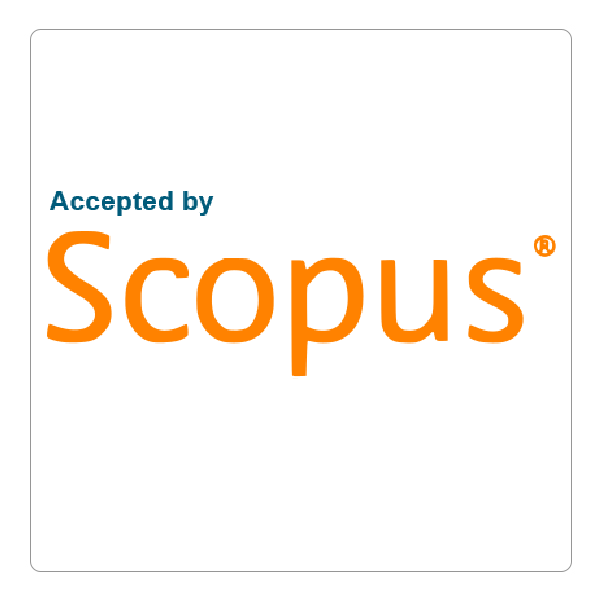How to Cite This Article
Salih, Hemn Othman; Keya, Dawod Rasooli; and Mohammed, Kamyar Mutalib
(2023)
"Integrated Use of USLE, GIS, and Remote Sensing for Soil Erosion Mapping in Erbil Basin,"
Polytechnic Journal: Vol. 13:
Iss.
2, Article 2.
DOI: https://doi.org/10.59341/2707-7799.1716
Document Type
Original Article
Abstract
This article presents a comprehensive study on the integrated use of the Universal Soil Loss Equation (USLE), Geographic Information System (GIS), and remote sensing (RS) techniques for soil erosion mapping in the Erbil Basin. Soil erosion is a critical environmental issue that affects soil productivity, water quality, and ecosystem health. Understanding the spatial distribution and severity of soil erosion is essential for effective land management and erosion control measures. The study utilizes the USLE model, which considers multiple factors contributing to soil erosion, including rainfall erosivity, soil erodibility, slope length, slope steepness, and land cover. GIS tools were employed to process and analyze the spatial data, including digital elevation models (DEMs), soil maps, rainfall data, and land cover information. Remote sensing data from satellite imagery were incorporated to enhance the accuracy and spatial coverage of the soil erosion mapping. By integrating these approaches, a comprehensive soil erosion map of the Erbil Basin was generated, providing insights into the extent and severity of erosion across the study area. The results depicted variations in soil erosion rates, identifying high-risk areas prone to erosion and highlighting the factors contributing to erosion vulnerability. The estimated yearly soil loss in the context of USLE was ranged from 1.9 to 6.3 ton per hectare.
Revise Date
04/10/2023
Accept Date
21/09/2023
References
[1] Balabathina VN, Raju RP, Mulualem W, Tadele G. Estimation of soil loss using remote sensing and GIS-based universal soil loss equation in northern catchment of Lake Tana Sub-basin, Upper Blue Nile Basin, Northwest Ethiopia. Environ Syst Res 2020;9:35. https://doi.org/10.1186/s40068-020-00203-3.
[2] Ahmad SM, Saloom AJ, Saliem KA, Alani KA, Muklef WM. Classification and Distribution of Iraqi soils. Int J Agri Innov Res 2014;2.
[3] Allison LE. In: Black CA, Evans DD, White JL, Ensminger LE, editors. Methods of soil analysis. Agronomy series no. 9. Madison, Wisconsin: American Society of Agronomy; 1965.
[4] Aziz FH, Karim TH, Ismail AO, Ahmed DG, Ghaib FA, Karim K, et al. Study of agro-ecological zoning for dianaMergasor-Barzan and Sheruan Mazn/Rubar Barazgird valley areas. FAO Representation in Iraq, coordination office for northern Iraq. 2001.
[5] Chen LX, Qian, Shi Y. Critical area identification of potential soil loss in a typical Watershed of the three Gorges Reservoir region. Water Resour Manag 2011;25:3445e63.
[6] Dhakal AS, Bajracharya RM. Soil erosion assessment and prediction models using geospatial techniques: a review. Int Soil Water Conser Res 2019;7:93e109. https://doi.org/ 10.1007/s11269-011-9864-4.
[7] El Jazouli A, Barakat A, Ghafiri A, El Moutaki S, Ettaqy A, Khellouk R. Soil erosion modeled with USLE, GIS, and remote sensing: a case study of Ikkour watershed in Middle Atlas (Morocco). Geosci Lett 2017;4. https://doi.org/10.1186/ s40562-017-0091-6.
[8] Feng Q, Zhao W. The study on cover-management factor in usle and rusle: a review. Acta Ecol Sin 2014;34:4461e72. https://api.semanticscholar.org/CorpusID:56346814.
[9] Hussein MH, Kariem TH, Othman AK. Predicting soil erodibility in northern Iraq using natural runoff plot data. Soil Tillage Res 2007;94:220e8. https://doi.org/10.1016/ j.still.2006.07.012.
[10] Hussien KS. Conservation planning for Bastora catchment based on detection of erosion risk prone areas. A thesis submitted to the Council of the College of Agriculture at Salahaddin University-Erbil in partial fulfillment of the requirements for the degree of Master of Science in Soil Conservation. 2016.
[11] Jarbou AB, Elhag M, Amal YA, Hanaa KG, Ahmad KH, Ebtisam A. Soil erosion Estimation using remote sensing techniques in Wadi Yalamlam basin, Saudi Arabia. Adv Mater Sci Eng 2016;2016:1e8. https://doi.org/10.1155/2016/ 9585962.
[12] Keya RD, Karim HT. Multivariate models for predicting rainfall erosivity from annual rainfall and geographical coordinates in A region with A non- uniform pluvial Regime. Iraqi J Agric Sci 2020;51:1249e61. https://doi.org/10.36103/ ijas.v51i5.1133.
[13] Keya DR. Building models to estimate rainfall erosivity Factor from rainfall depth in Iraqi Kurdistan Region. A dissertation submitted to the council of the college of agricultural Engineering Sciences at Salahaddin university-Erbil in Partial fulfillment of the requirements for the degree of PhD in soil science (soil and water Conservation). 2020. https://doi.org/10.13140/RG.2.2.33806.38726/1.
[14] Keya DR, Salih HO, Hayder AEP, Mawlood AO. Spatial mapping and assessment of soil erodibility using GIS in the Middle of Erbil province. Iraqi J Agric Sci 2022;56 (forthcoming 2025).
[15] Kolli MK, Opp C, Groll M. Estimation of soil erosion and sediment yield concentration across the Kolleru Lake catchment using GIS. Environ Earth Sci 2021;80:1e14. https://doi.org/10.1007/s12665-021-09443-7.
[16] Mohammed Hameed H. Soil Erosion assessment within the Erbil watershed using geo-informatics technology. Halabja Univ J 2021;6:311e29. https://doi.org/10.32410/huj-10375.
[17] Panagos P, Meusburger K, Alewell C, Montanarella L. Soil erodibility estimation using LUCAS PointSurvey data of Europe. Environ Model Software 2012;30:143e5. https:// doi.org/10.1016/j.envsoft.2011.11.002.
[18] Renard KG, Freimund JR. Using monthly precipitation data to estimate the R factor in the revised USLE. J Hydrol 1994; 157:287e306. https://doi.org/10.1016/0022-1694(94)90110-4.
[19] Renard KG, Foster G, Weesies G, McCool D, Yoder D. Predicting soil erosion by water: a guide to conservation planning with the Revised universal soil loss equation (Rusle). Washington, DC USA: United States Department ofAgriculture; 1997. vol. 703, https://www3.epa.gov/npdes/pubs/ ruslech2.pdf.
[20] Soil Survey Staff. Soil taxonomy: a basic system of soil classification for making and interpreting soil surveys. In: Agric. Handb. No. 436. 2nd ed. Washington, DC: USDA-NRCS. U.S. Govt. Print. Office; 1975.
[21] Stone RP, Hilborn D. Universal soil loss equation (USLE) factsheet. Ontario: Ministry of Agriculture, Food and Rural Affairs; 2012.
[22] Williams RJ, Renard KG. A new method for assessing erosions effect on soil productivity. J Soil Water Conserv 1983; 38:381e3. https://www.jswconline.org/content/38/5/381.
[23] Wischmeier WH, Smith DD. Predicting rainfall-erosion losses: a guide to conservation planning. Agricultural Handbook No. 537. US Department of Agriculture; 1978. https://www.ars. usda.gov/ARSUserFiles/64080530/RUSLE/AH_537.pdf.











Follow us: